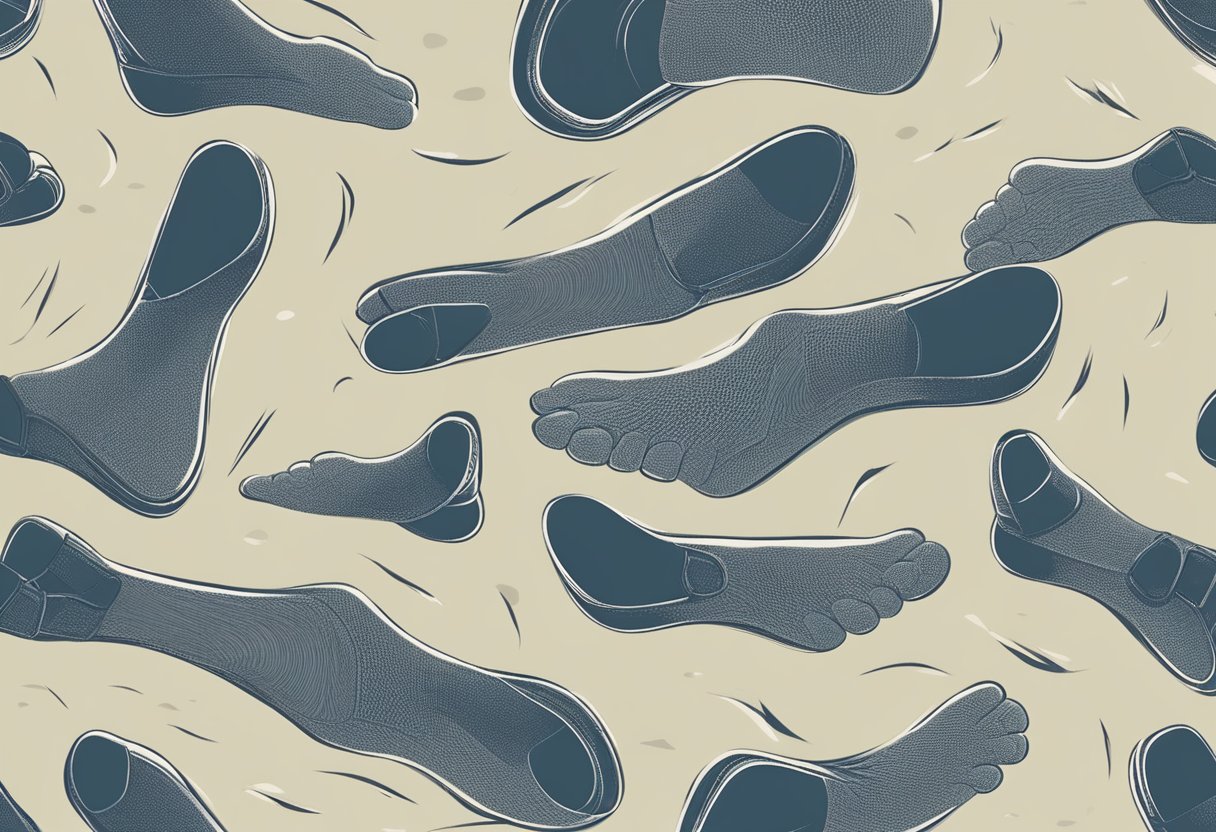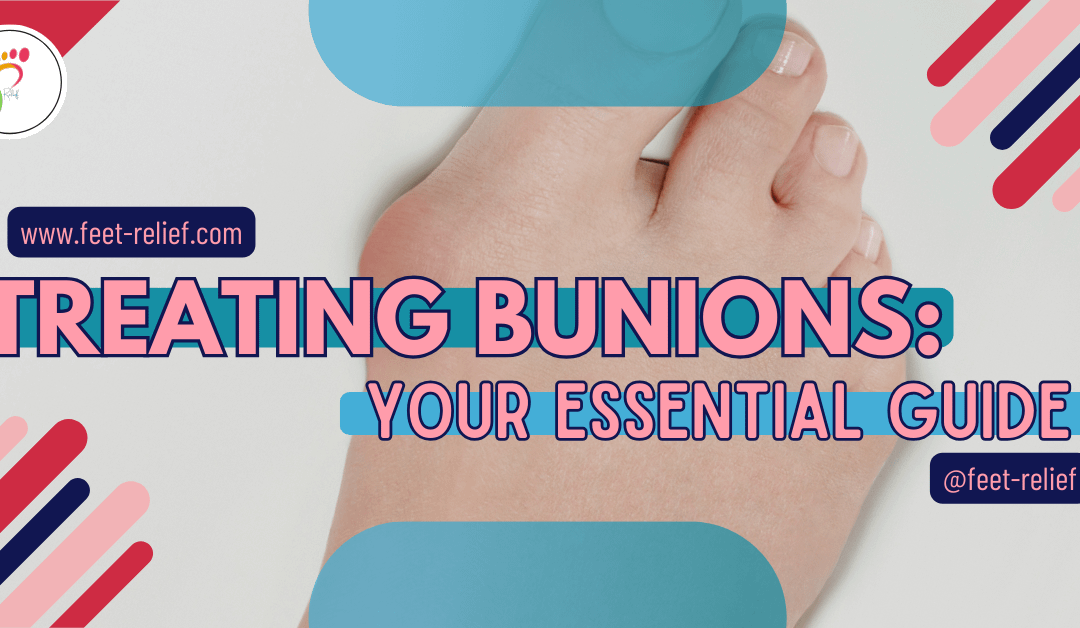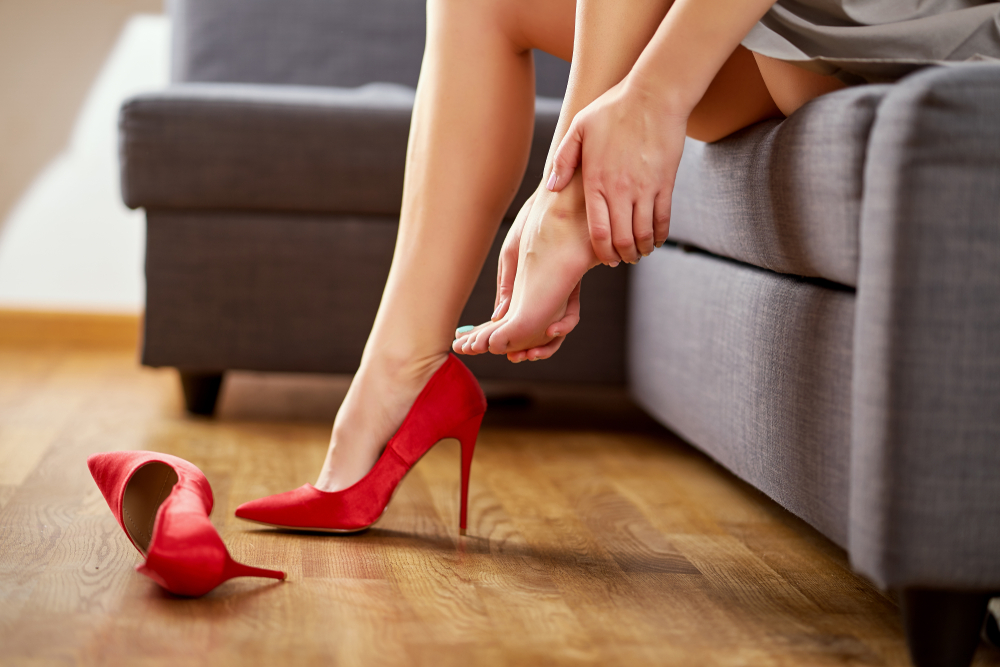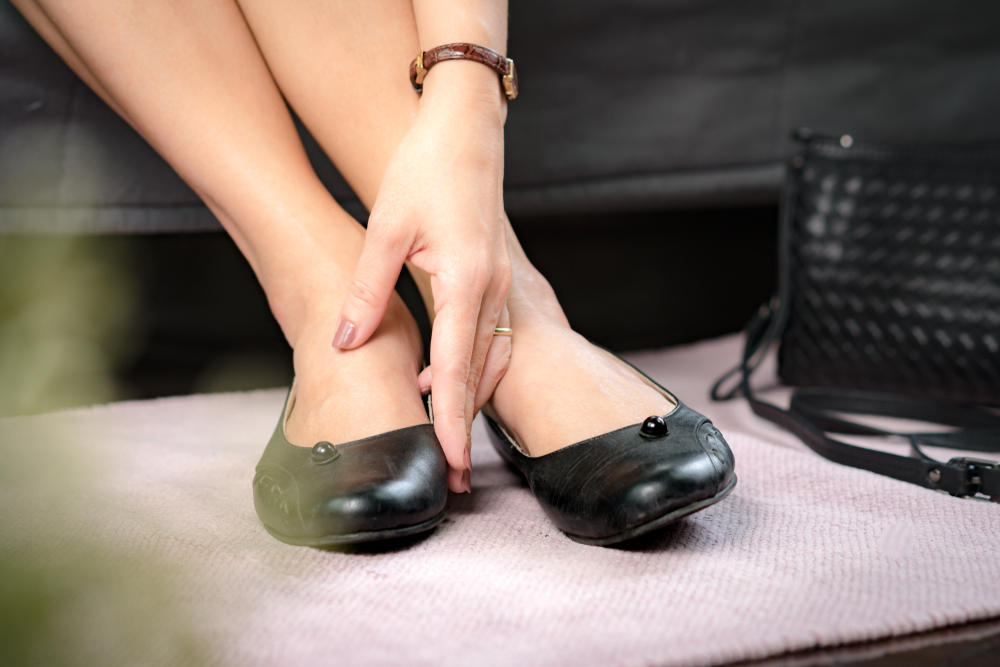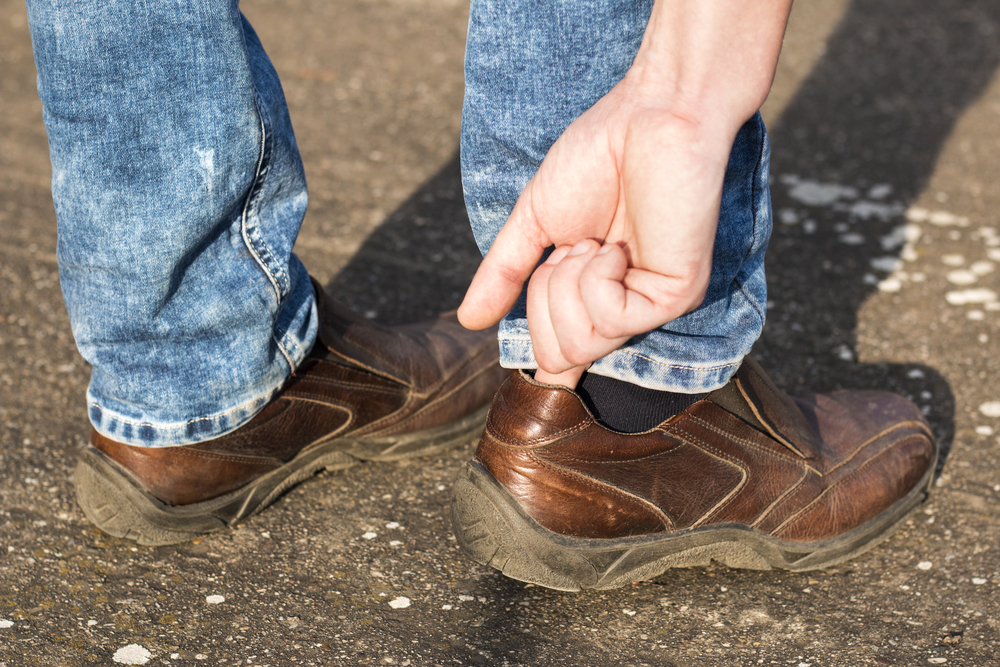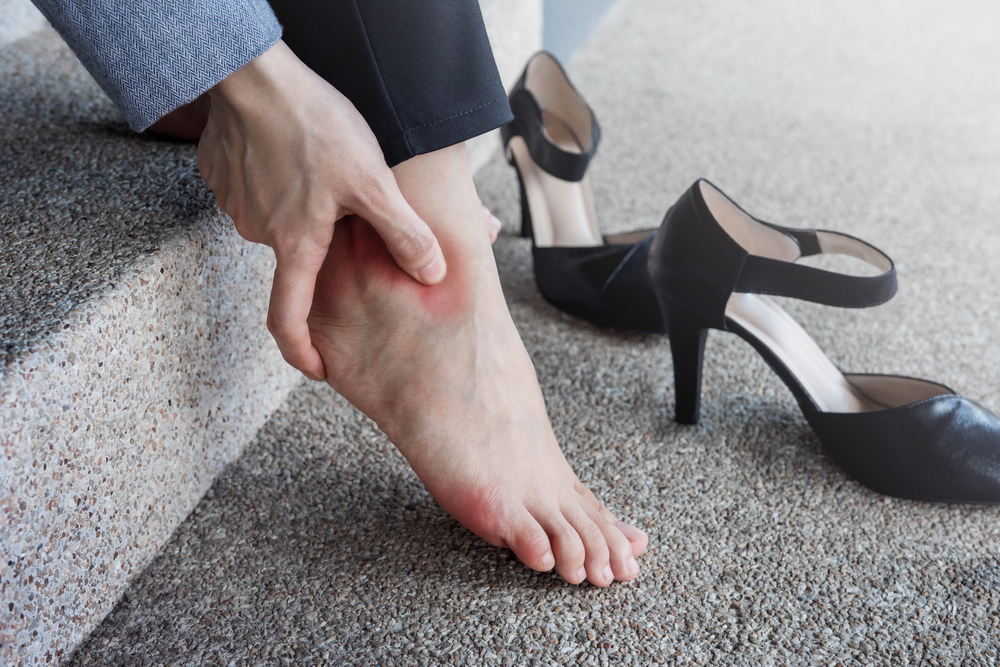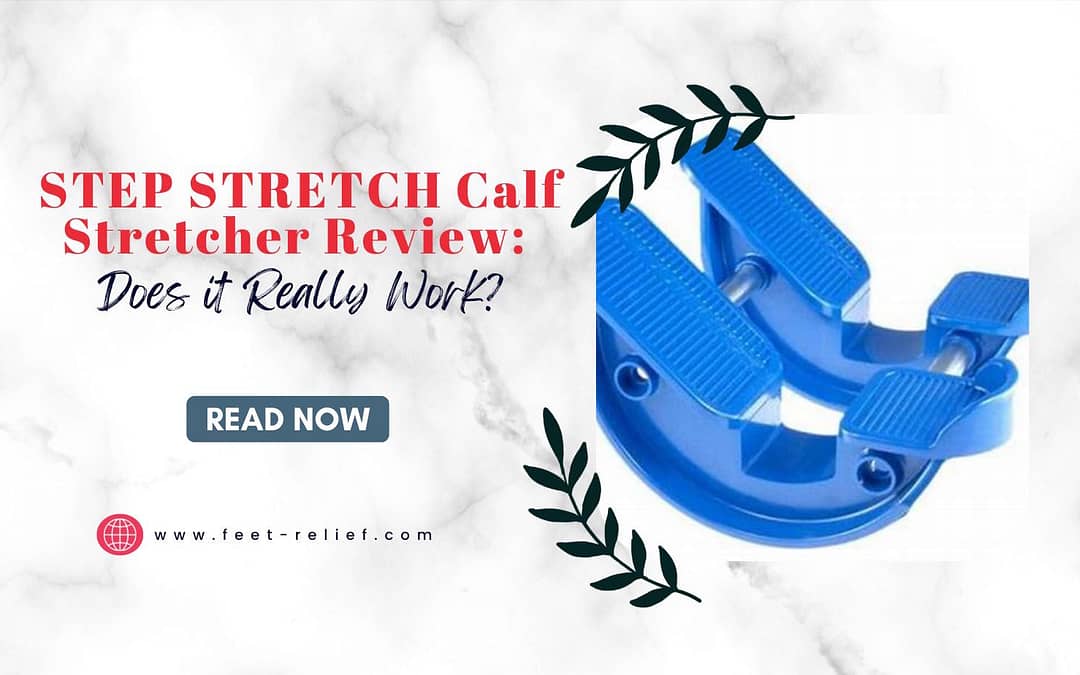
The Impact Of High Heels On Foot Health: Understanding The Long-Term Consequences
High heels on foot health – a love-hate relationship for many of us. They boost our confidence and elongate our legs, but that undeniable power often comes at a cost. I’ve certainly experienced the foot pain and discomfort that can creep in after a long day in heels, and let’s be honest, I’m not alone. But is there a way to embrace the style of high heels without sacrificing our foot health? Let’s delve into the world of high heels and explore their impact on our bodies, from historical origins to practical tips for keeping your feet happy.
High Heels on Foot Health: The Hidden Cost of Style
Wearing high heels is a fashion statement for many, but it’s no secret that these stylish shoes can come at a cost to your foot health. Beyond just a temporary pinch or discomfort, high heels can lead to a variety of foot issues that extend far beyond the surface. Understanding how these glamorous yet potentially harmful shoes affect your feet is crucial to making informed decisions about your footwear.
High heels can significantly alter the natural biomechanics of your feet, leading to a range of ailments and even long-term damage. By elevating the heel above the toes, these shoes can change your posture, put pressure on your foot’s anatomy, and strain muscles and joints. Clear knowledge on the proper use of high heels, as well as alternative footwear options, is essential in maintaining the health of your feet and overall well-being.
Key Takeaways
- Elevated heels can lead to changes in foot biomechanics and posture.
- Prolonged high heel use may result in common foot ailments.
- Awareness of appropriate high heel usage is vital for foot health.

Historical Perspective of High Heel Use
High heels have a long and varied history, and your understanding of their impact on foot health is enriched by examining their origins. Initially, high heels served practical purposes. They were first worn by Persian cavalrymen in the 10th century to secure their feet in stirrups. As Europeans adopted high heels, they became a mark of nobility and upper-class status.
During the 16th to 18th centuries, both men and women wore high heels to signify their social standing. However, by the mid-18th century, men’s fashion shifted away from high heels, associating them more with femininity.
In the 19th and 20th centuries, high heels evolved into a key fashion element for women. Medical scientists have warned about the health hazards of high-heeled shoes for more than 250 years, starting with concerns over their impact on foot health and posture.
Your understanding of high heels cannot be complete without acknowledging how these shoes have become intertwined with gender and identity. By the late 20th century, wearing high heels was both a fashion statement and a cultural expectation for women in many professional and social contexts.
Despite their fashionable allure, high heels can lead to musculoskeletal injuries, as outlined in various studies and reviews. While the design of high heels has changed over time, the concerns about their impact on your foot health have remained consistently important.
Anatomy of the Human Foot
The human foot is a complex structure crucial for mobility, where each part must work harmoniously to maintain balance and support the body’s weight. Understanding its anatomy helps to comprehend how high heels can impact foot health.
Bone Structure and High Heels
Your feet are engineering marvels, consisting of 26 bones, 33 joints, and over 100 muscles, tendons, and ligaments. The main bone structures include the forefoot (metatarsals and phalanges), the midfoot (a pyramid-like collection of bones forming the arches), and the hindfoot (the heel and ankle). When you wear high heels, the entire structure of your foot is forced into an unnatural alignment, which can lead to a shift in pressure and an imbalance in weight distribution over the foot’s bones.
- Heel (Calcaneus): Supports the heel of the foot.
- Metatarsals: Five long bones connecting the toes to the ankle.
- Phalanges: Your toes; important for balance and walking.
Muscle Groups Affected by High Heels
Muscles in the foot work in groups for movement and stability. The key muscle groups include the intrinsic muscles (located within the foot and responsible for fine motor actions) and extrinsic muscles (originate in the lower leg, controlling broader movements). High heels particularly affect the Achilles tendon, the thick tendon linking your calf muscles to the heel. This tendon can shorten and stiffen from prolonged heel wear, while other muscles may weaken due to lack of use or be overstrained.
- Achilles Tendon: Links the heel to the calf muscles; high heels can cause shortening.
- Intrinsic Muscles: Maintain arch structure; can be affected by altered foot dynamics.
- Extrinsic Muscles: Control foot movement; prolonged high heel use can lead to imbalances.

Biomechanical Changes Induced by High Heels
Wearing high heels can significantly alter your body’s natural mechanics and posture. The following subsections detail how these shoes affect your gait and physical alignment.
Posture Alteration and Its Effects
When you wear high heels, the natural alignment of your body shifts. Heels elevate the back of your foot, tilting your body weight forward. To compensate, you may arch your back and alter your hip position, leading to potential alignment changes in your spine and lower back. This alteration can put additional stress on your knees and may contribute to discomfort or pain over time.
Gait Modifications Due to High Heels
Your walking pattern, or gait, is considerably modified when you don high heels. The footwear raises your heel, shortening your stride length and increasing the pressure on the forefoot. This shift in distribution can lead to a range of effects from increased knee and ankle motion to heightened stress on the muscles and tendons of the legs. Such biomechanical adjustments may influence balance and increase the risk of falls or ankle injuries.
Common Foot Ailments from High Heels
High heels can elevate your style, but they can also lead to a variety of foot issues. Your understanding of the potential problems can help in making informed footwear choices.
Bunions and High Heels
Bunions, painful bony bumps that form at the base of the big toe, are often exacerbated by high heels. These shoes often have a narrow toe box that forces your toes into an unnatural position, which can cause or worsen bunions.
Hammer Toes Linked to High Heel Usage
Hammer toes occur when your toe bends into a claw-like position. Consistently wearing high heels can lead to hammer toes by forcing your toes downwards, causing the muscles to shorten and making it difficult for them to lay flat.
Metatarsalgia and High Heeled Footwear
Metatarsalgia, characterized by pain and inflammation in the ball of your foot, is often associated with high heeled footwear. The elevated heels shift your body weight forward, increasing pressure on the metatarsal bones.

Long-Term Health Implications
Wearing high heels consistently can have serious implications for your long-term foot health. You need to be aware of how these fashionable choices might lead to joint and back issues.
Joint Degeneration and High Heels
Chronic high heel use can lead to joint degeneration, particularly in the knees. The altered posture required to balance in high heels increases stress on the knee joints, which can contribute to the development of osteoarthritis. Studies also suggest that high heels can exacerbate existing joint problems, leading to further discomfort and reduced mobility. Prolonged wearing of heels with a narrow toe box can cause bunions, hammertoe, and neuroma, complaints often seen by podiatrists and orthopedic specialists.
Back Pain Correlated to High Heel Use
The shift in your center of gravity when you wear high heels can lead to changes in your spinal curvature, causing lower back pain. Your spine has to compensate for the forward tilt of your pelvis, which can strain the lumbar spine and the muscles supporting it. The unnatural position of the feet can also aggravate conditions such as equinus, where the Achilles tendon is shorter than usual, making flat-footedness or walking without heels painful.

Proper High Heel Usage and Foot Care
When selecting and wearing high heels, it’s important to make strategic choices to minimize foot strain and to adopt a routine that promotes foot health.
Choosing the Right High Heel
To reduce the risk of foot pain and injury, select high heels with features that offer support and reduce strain. Consider the following:
- Heel Height: Opt for heels that are no higher than 2 inches. A study in Arthritis Care & Research highlights the elevated risk of bunions with high heels largely due to increased pressure on the forefoot.
- Toe Box: Choose a wider toe box to allow room for your toes. This can prevent the development of bunions and hammertoes.
- Heel Shape: Chunky heels or wedges provide more stability than stilettos, reducing the risk of ankle sprains.
Foot Exercises for High Heel Wearers
Engaging in regular foot exercises can strengthen the muscles, improve balance, and reduce injury risk. Incorporate these two simple exercises into your routine:
- Toe Curls: Place small objects like marbles on the floor and use your toes to pick them up. Aim for 10 repeats per foot.
- Heel Raises: Stand with your feet flat on the ground, then slowly raise your heels until you are on your toes. Lower back down. Repeat 10 times.
Recommendations for Limiting Damage
Use these practices to minimize the negative impact of high heels on your feet:
- Limit Wearing Time: Wear high heels for limited periods and switch to more comfortable shoes when possible.
- Padding and Inserts: Use gel inserts or cushioned pads to reduce impact and distribute pressure more evenly. The heel cup pad can decrease heel pressure and impact force.
- Alternate Shoes: Rotate your footwear choices throughout the week to vary foot positioning and pressure points.
Alternative Footwear and Healthier Practices
When selecting footwear, consider the impact on your foot health. A shift towards shoes with proper support and a comfortable fit is essential.
- Flats and Low Heels: They are closer to the ground, which helps in better weight distribution. Shoes with a heel height under two inches are recommended for daily wear.
- Orthopedic Shoes: Designed for comfort, they offer good arch support and help in aligning your feet properly, which can prevent foot strain.
- Sneakers and Athletic Shoes: They typically provide excellent cushioning and support. Choosing the right sneaker for your foot type can also help improve balance and posture.
- Walking Shoes: These are necessary if you are on your feet throughout the day. Look for shoes with a roomy toe box, cushioning, and that fit well.
Healthier Practices:
- Limit Wearing Time: If you must wear high heels, limit the duration to avoid long-term damage. Some studies suggest that wearing high-heeled shoes affects balance and lower extremity biomechanics.
- Exercises for Your Feet: Strengthening and stretching exercises can improve your feet’s resilience. Yoga and Pilates can help in strengthening the muscles around your feet and ankles.
- Proper Sizing: Always ensure your shoes fit properly to prevent foot problems. Feet can change size and shape, so get measured regularly.
By considering these alternative footwear options and adopting healthier practices, you can help maintain your foot health and comfort.
High Heels in the Workplace: A Health Perspective
When you choose to wear high heels at work, you’re not just making a fashion statement; you’re also affecting your foot health. High heels alter your body’s alignment and can lead to a range of musculoskeletal issues. Wearing heels causes your foot to move into a position that increases the stress on the front of the foot, and this can result in pain and deformities over time.
Consider the following health impacts:
- Joint Pain: Constant elevation of the heel leads to increased pressure on the knee and hip joints.
- Posture Changes: Heels cause an anterior pelvic tilt, putting strain on your lower back.
- Reduced Balance: The risk of falls and sprained ankles goes up as stability is compromised.
Medical studies, including one from Harvard, have investigated workplace scenarios and observed how high heels can affect your performance and well-being. They documented that even the simple act of interviewing for a job or leading a class could be influenced by the choice of footwear.
To mitigate these potential issues, consider the following advice:
- Choose heels with a lower height and a wider base for better foot support.
- Limit the time spent in heels; rotate with comfortable flats throughout your workday.
- Employ ergonomic accessories, such as gel insoles, to ease the pressure on your feet.
Research from NCBI has shown that the long-term wearing of high heels can lead to a slower walking speed, shorter step length, and other changes in gait mechanics, which further corroborates the need to be cautious about your high heel usage at work. Your foot health is essential not just for your comfort but for your overall well-being and performance in the workplace.
High Heels on Foot Health: Finding Balance Between Style and Support
High heels can elevate your confidence and enhance your outfit, but as we’ve explored, they can also come at a cost to your feet. The good news is that with a little awareness, you can navigate this world of footwear choices mindfully.
Remember, your feet are the foundation that carries you throughout your day. By incorporating a variety of shoes with good arch support and comfortable fits, alongside strategic high heel use, you can strike a balance between style and foot health.
Thank you for joining us on this exploration of high heels and foot health. We encourage you to prioritize healthy practices for your feet. Whether it’s incorporating foot exercises into your routine, choosing supportive shoes for daily wear, or limiting high heel usage, small changes can make a big difference in your long-term comfort and well-being.
Frequently Asked Questions
High heels can be stylish, but they often come with a range of effects on your foot health. This section aims to directly address some of the common concerns and questions you might have about the impact of high heels on your feet.
How can one alleviate foot pain attributed to high heel usage?
To alleviate foot pain associated with high heels, consider wearing insoles designed for high heels, stretching your feet regularly, and limiting the duration of heel wear. It’s also important to choose heels with a proper fit and adequate arch support.
Are there any health benefits associated with wearing high heels?
There is limited evidence suggesting that wearing high heels may improve the efficiency of your walk over time, as some individuals adapt to the altered dynamics of high heel gait. However, these potential benefits are often outweighed by the negative impacts on foot health.
What kind of foot damage can result from regular high heel wear?
Regular high heel wear can lead to foot damage including bunions, hammertoes, stress fractures, and exacerbation of pre-existing foot deformities. Increased pressure on the forefoot is a significant contributor to these issues.
What are the potential long-term consequences on feet from prolonged high heel use?
Prolonged wearing of high heels can result in a range of long-term consequences, including the development of chronic foot pain, postural changes, shortened calf muscles, and increased risk of ankle sprains.
What adverse effects might high heels have on overall foot health?
High heels can have multiple adverse effects, including an increased likelihood of foot injuries and disorders, altered gait mechanics, and pressure-related skin conditions like corns or calluses.
What does the term 'high heel syndrome' refer to?
‘High heel syndrome’ refers to the complex of problems and symptoms associated with regular high heel wear, encompassing both the structural changes to the foot and the resultant pain or dysfunction that can affect mobility and quality of life.
Walk This Way: Foot Health Awaits!
Loved this deep dive into high heels? At feet-relief.com, we’re passionate about happy, healthy feet! Explore our engaging content, in-depth product reviews, and connect with our vibrant foot-care community on Facebook. Walk this way towards pain-free steps!









